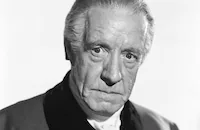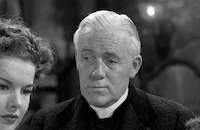The Ice Follies of 1939

Brief Synopsis
Cast & Crew
Reinhold Schunzel
Joan Crawford
James Stewart
Lew Ayres
Lewis Stone
Bess Ehrhardt
Film Details
Technical Specs

Synopsis
Larry Hall and Eddie Burgess have a successful skating act until Larry falls in love with Mary McKay, an inept skater whom Larry insists upon including in the act. Fired from job after job because of Mary's ineptitude, Larry keeps up his spirits by dreaming of producing a colossal ice show. Following their latest dismissal, the couple elope, and Mary, feeling guilty for damaging her husband's career, convinces Douglas Tolliver, Jr., the head of Monarch Studios, to offer her a contract. While reading the fine print of the contract, Mary discovers that she is forbidden to marry without the studio's permission, and Larry convinces her to keep their marriage a secret. After his wife's first picture catapults her to stardom, Larry finds himself relegated to the position of househusband and leaves for New York in hopes of producing his ice extravaganza. In New York, Larry is reunited with Eddie in the office of producer Mort Hodges, who raises the money to make Larry's dream a reality. Larry's Ice Follies becomes a smash hit, and with husband and wife now equal in stature, Mary and Larry hope to revive their marriage. When they discover that they are still separated by the demands of their careers, however, Mary publicly announces that she is foresaking her career to return to a life of domesticity. The impasse of their conflicting careers is finally bridged when Tolliver hires Larry to produce an ice show starring his wife, thus uniting their personal and professional lives.

Director
Reinhold Schunzel
Cast

Joan Crawford

James Stewart

Lew Ayres

Lewis Stone
Bess Ehrhardt

Lionel Stander

Charles D. Brown
International Ice Follies
Eddie Shipstad
Roy Shipstad
Oscar Johnson
Harris Legg
La Verne Busher
Truman Bradley
Charles Williams
Eddy Conrad
Arthur Loft
Mary Forbes

James Flavin
Joe Manz
Hal K. Dawson

Charles Judels
Louis Adlon

Carl Switzer
Darla Hood
Wade Boteler
Adolph Hebert
Larry Jackson

Armand Kaliz
Larry Jackson
Harrison Greene
Libby Taylor

Eddie Kane
James Mcnamara
Edward Earle
Crew
Adrian
Leo Arnaud
George Bassman
Frances Claudet
Roger Edens
Cedric Gibbons
Sydney Guilaroff
W. Donn Hayes
Eddie Imazu
Henri Jaffa
Natalie Kalmus
Oliver T. Marsh
Bernice Petkere
Leonard Praskins
Leonard Praskins
Merrill Pye
Harry Rapf
Val Raset
Joseph Ruttenberg
Florence Ryerson
Douglas Shearer
Georgie Stoll
Marty Symes
Dolly Tree
Franz Waxman
Edwin B. Willis
Edward Woehler
Edgar Allan Woolf

Film Details
Technical Specs

Articles
Ice Follies of 1939
Perhaps MGM studio head Louis B. Mayer was trying to capture some of the box office generated by championship skater Sonja Henie's films at 20th Century-Fox when he approved the project. Or maybe he was flattered by the script's depiction of a kindly studio head (played by Lewis Stone) at a company that obviously was MGM (it's called Monarch in the film, possibly inspired by the studio's mascot, Leo the Lion). Crawford's explanation of the film was simple and to the point: "Everyone was out of their collective minds" (from Roy Newquist, Conversations With Joan Crawford).
Ironically, the film mirrored what was happening in Crawford's life at the time. Just as her character finds her marriage threatened when her success as a film star eclipses Stewart's status as a skater and ice choreographer, so her real-life marriage to Franchot Tone was falling apart, partly because he had never matched her success as a Hollywood star.
Still, Crawford tried to make the best of things. Although there was little of the star's skating in the film (she would later say she did all of her skating on her ankles), the studio sent out press releases to announce that she was rigorously training to sing in the film (she had already sung on-screen in a few early musicals like The Hollywood Revue of 1929). The flacks even suggested that the results were so impressive that after performing her six songs in Ice Follies of 1939, she was considering making her debut at the Metropolitan Opera. When the film came out, however, her songs had been reduced to two, both of which were dubbed by a professional singer. Crawford claimed her vocals had been cut under orders from Jeanette MacDonald, who was afraid of being supplanted as MGM's resident singing star. At least the situation gave MacDonald a good laugh.
Crawford, meanwhile, could content herself with the usual lavish MGM treatment. Adrian, who had helped shaped her star image in the early '30s, designed her costumes. The cinematographer was Joseph Ruttenberg, who had just won an Oscar® for his lavish black-and-white work on The Great Waltz (1938). And the Technicolor sequence gave fans their first glimpse of Crawford's true coloring. But the film's chief distinction would come 42 years later with its use as the picture she was making at the opening of Mommie Dearest, the 1981 biography starring Faye Dunaway and based on the scandalous memoir by Crawford's daughter Christina.
For both Stewart and Crawford, the best thing about Ice Follies of 1939 was moving on to other films. For Crawford, the film gave her another excuse for demanding better roles from the studio, which helped lead to her casting in the more prestigious and successful The Women (1939) later that year. Stewart would follow with the charming screwball comedy It's a Wonderful World (1939), which teamed him with Claudette Colbert, and the political comedy that helped shape his image as an all-American hero, Frank Capra's Mr. Smith Goes to Washington (1939).
Producer: Harry Rapf
Director: Reinhold Schunzel
Screenplay: Leonard Praskins, Florence Ryerson, Edgar Allan Woolf, based on the story by Praskins
Cinematography: Joseph Ruttenberg, Oliver T. Marsh
Art Direction: Cedric Gibbons
Music: Roger Edens
Cast: Joan Crawford (Mary McKay), James Stewart (Larry Hall), Lew Ayres (Eddie Burgess), Lewis Stone (Douglas Tolliver), Lionel Stander (Mort Hodges), Truman Bradley (Melvyn Rodney), Marie Blake (Effie Lane).
BW-83m.
by Frank Miller

Ice Follies of 1939
Quotes
Trivia
A large number of actors listed in studio records did not appear in the movie: Charles Williams (Max Morton), Eddie Conrad (Hal Gibbs), Mary Forbes (Lady Hilda), Carl 'Alfalfa' Switzer (Small Boy), Darla Hood (Sister) and Armand Kaliz (Count). The movie was heavily edited; Joan Crawford recorded three songs, all of which were cut.
None of the three main stars could skate; the screenplay was written with this in mind.
Notes
The working title of this film was Ice Follies. Whereas onscreen credits list only Eddie and Roy Shipstead and Oscar Johnson as members of the Ice Follies, the reviews include Harris Legg and LaVerne Busher as members, too. According to the Variety review, Joan Crawford recorded three songs for this fllm, all of which were cut. The review also notes that for this picture, art director Merrill Pye designed the first mechanical set to operate on ice. The final Cinderella sequence was filmed in technicolor.















